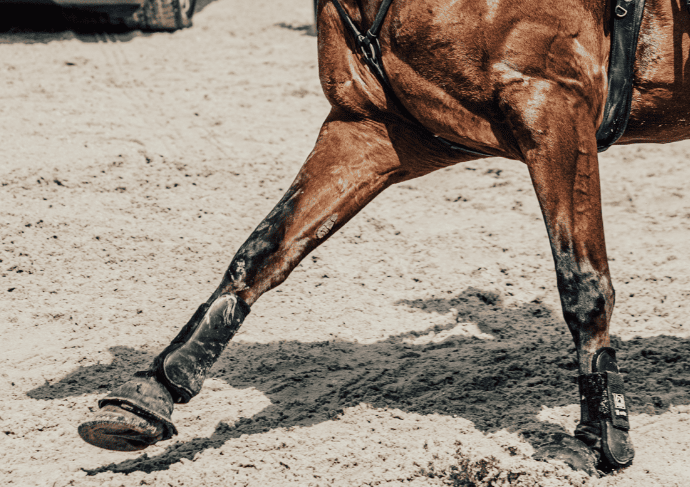Having an efficient recovery procedure for your horse’s legs after any physical activity is an essential component to your animal’s overall well-being. Every time your horse exerts energy such as a full-on sprint, its leg muscles carry the tremendous burden of supporting hundreds of pounds, which puts immense pressure on the ligaments and joints of the lower body. Any owner or trainer trying to preserve their horse’s agility and speed should consider implementing these recovery strategies for protecting legs from future injury or damage:
Inspect legs thoroughly
For starters, one of the easiest, yet most important, actions you can take after a horse is finished running is inspecting the legs for any irregularities. If you aren’t doing this already, this will help you keep an eye on any potential abnormalities, such as bumps, swelling or scratches. You should always try to clean off your horse’s legs after a race or run, because sweat and dirt that sticks to the lower body for an extended period of time may eventually result in skin infections.
Cold water
Another important recovery practice to consider is cooling down your horse’s legs with cold water. While this is certainly an easy suggestion to act on, the results can be extremely beneficial. This is essentially a variation of hydrotherapy, which can do wonders for horses, ranging from alleviating sore muscles to reducing excess heat to healing any indications of swelling. All this really takes is five to 10 minutes of washing down the horse’s legs with a hose, but it’s important to only use cool water. This is also recommended in preparation for a race or run. Get a tub that’s big enough for your horse’s legs and fill it up with ice cold water, which in turn can loosen up any constriction within the leg muscles.
Applying ice
Cooling is crucial to the workout recovery process of a horse, and sometimes washing your horse’s legs off with cold water isn’t enough. One of the best ways to protect your horse from leg injury is through ice therapy, which can help with multiple health factors, such as reducing heat on muscle tissues, increasing flexibility and preventing future sprains. The most popular method when it comes to icing your horse’s legs is using Velcro ice pads, which can wrap around its legs and stay there without the owner or trainer having to hold them on. While ice therapy is generally suggested only for injured horses, Horse&Rider recommends applying ice whenever your horse has just completed physical activity.
Wrap it up
While the cool-down component to a horse’s recovery process is key, one of the more popular practices that should be done in addition to icing or washing is wrapping your horse’s legs. Whether it’s through a poultice or bandage, evenly applying a wrapping to the leg can provide relief by helping improve blood circulation throughout the lower body, which in turn can increase oxygen blood flow and alleviate sore muscles. You can also apply liniments to the horse’s legs before wrapping them up. EZ-Willow™ Liniment is a cooling gel that can help promote healthy muscle recovery by soothing areas of minor soreness. Finish Line’s EZ-Willow™ Poultice can also be used to relieve minor stiffness and soreness due to overexertion. Wrapping can be left on a horse’s legs for anywhere between a few hours to an entire day, depending on whether you’ve noticed any reduction in racing or running performance.
Joint supplements
Horse joint supplements may promote healthy joint function, especially for those that frequently race or trot. Supplementation with ingredients like glucosamine and hyaluronic acid can benefit older horses and horses in training.











